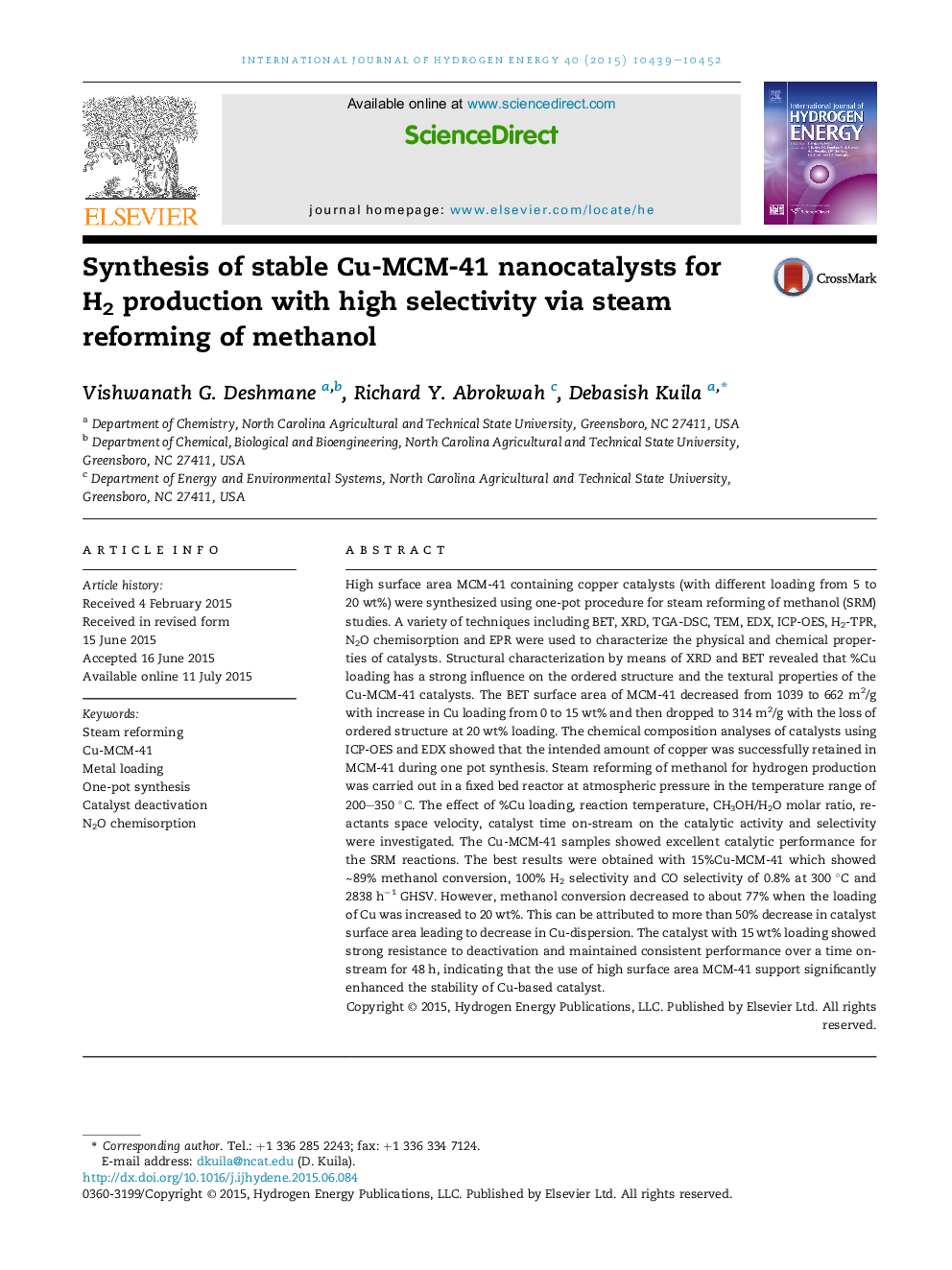| Article ID | Journal | Published Year | Pages | File Type |
|---|---|---|---|---|
| 1279096 | International Journal of Hydrogen Energy | 2015 | 14 Pages |
•Synthesis of high surface area Cu-MCM41 catalysts via one-pot hydrothermal method.•Effect of %Cu loading on surface area, pore size-volume and MCM41 ordered structure.•Effect of temperature, %Cu loading, CH3OH/H2O mole ratio and GHSV on SRM activity.•15%Cu-MCM41 showed ∼90% CH3OH conversion, 100% H2 and 0.79% CO selectivity in SRM.•Use of high surface area MCM-41 significantly enhanced the stability of Cu catalyst.
High surface area MCM-41 containing copper catalysts (with different loading from 5 to 20 wt%) were synthesized using one-pot procedure for steam reforming of methanol (SRM) studies. A variety of techniques including BET, XRD, TGA-DSC, TEM, EDX, ICP-OES, H2-TPR, N2O chemisorption and EPR were used to characterize the physical and chemical properties of catalysts. Structural characterization by means of XRD and BET revealed that %Cu loading has a strong influence on the ordered structure and the textural properties of the Cu-MCM-41 catalysts. The BET surface area of MCM-41 decreased from 1039 to 662 m2/g with increase in Cu loading from 0 to 15 wt% and then dropped to 314 m2/g with the loss of ordered structure at 20 wt% loading. The chemical composition analyses of catalysts using ICP-OES and EDX showed that the intended amount of copper was successfully retained in MCM-41 during one pot synthesis. Steam reforming of methanol for hydrogen production was carried out in a fixed bed reactor at atmospheric pressure in the temperature range of 200–350 °C. The effect of %Cu loading, reaction temperature, CH3OH/H2O molar ratio, reactants space velocity, catalyst time on-stream on the catalytic activity and selectivity were investigated. The Cu-MCM-41 samples showed excellent catalytic performance for the SRM reactions. The best results were obtained with 15%Cu-MCM-41 which showed ∼89% methanol conversion, 100% H2 selectivity and CO selectivity of 0.8% at 300 °C and 2838 h−1 GHSV. However, methanol conversion decreased to about 77% when the loading of Cu was increased to 20 wt%. This can be attributed to more than 50% decrease in catalyst surface area leading to decrease in Cu-dispersion. The catalyst with 15 wt% loading showed strong resistance to deactivation and maintained consistent performance over a time on-stream for 48 h, indicating that the use of high surface area MCM-41 support significantly enhanced the stability of Cu-based catalyst.
